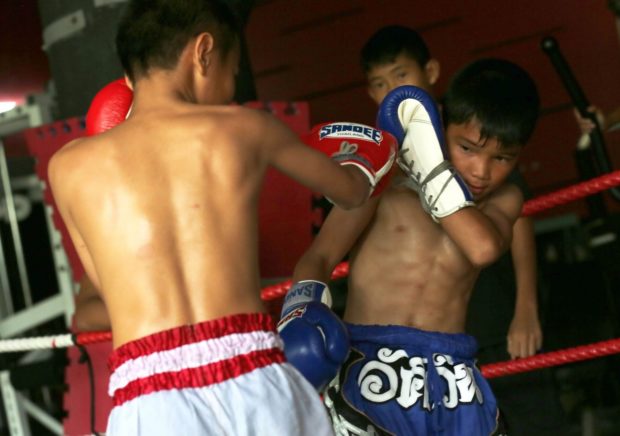
Many children in Thailand become professional muay thai boxers to help support their families and make money for boxing camps. But some of them end up with serious injuries that can sometimes prove fatal. The Nation/Asia News Network
BANGKOK — Three weeks after a 13-year-old boy died in a muay thai ring, the bill banning children from participating in paid matches has yet to reach legislators.
In response to this, the Child Safety Promotion and Injury Prevention Research Centre (CSIP) has stepped up pressure on the Tourism and Sports Ministry by listing the concerns about child boxing raised by well-known international organizations.
The organizations include the American Academy of Paediatrics (AAP), the World Health Organization and the US Labor Department.
A letter from AAP addressed to the Royal College of Paediatricians of Thailand “applauds” Thailand’s efforts to prevent children from sustaining injuries, but stresses that sport in which children “intentionally attempt to cause harm to the opponent” was unacceptable.
Over the past decade, the AAP has worked with other agencies to cut down on the harm caused to children involved in extreme sports.
“Boxing, including kick-boxing, exposes children to an unacceptable risk of injury, and therefore their participation in these activities should be prohibited,” it said, adding that the death of the 13 year-old boxer underscored the urgency to end this practice through law.
On November 10, 13-year-old muay thai fighter Anucha Thasako died from brain injury after a blow to his head knocked him down during a match in Samut Prakan.
CSIP said child boxing was “unacceptable” because injuries can have a long-term impact on the child’s mental development and can be considered a serious case of child labor.
“These child boxers are encouraged by their parents and boxing camps to fight each other to earn money for their family and generate income for the camp. Gamblers also bet on them. This deplorable practice continues despite the fact that the sport damages the children’s still-developing brain and leaves them with incurable learning disabilities and other physical and mental health impacts for the rest of their lives,” Dr Liviu Vedrasco said.
Vedrasco, a program officer at World Health Organization (Thailand), was speaking at the 13th World Conference on Injury Prevention and Safety Promotion last month.
The Boxing Bill needs to be passed as soon as possible so children can be protected from harm and not taken advantage of, he said.
CSIP’s statement also cited the 2017 report on the Worst Forms of Child Labor issued by the US Department of Labor, which lists muay thai as one of the worst forms of child labor in Thailand. The report puts these paid boxing matches right up there with the cruel seafood processing industry, human trafficking, commercial exploitation and dangerous street work.
CSIP director Dr Adisak Plitpolkarnpim said the law needs to be passed urgently, and for it to become a law during this government’s tenure, the bill must be submitted to the National Legislative Assembly (NLA) by the end of December.
“If we miss out on this opportunity, we will need to start all over again from square one,” he said.
It has taken about five years for the effort to ban child boxing to get this far, he said. It took roughly two years before the amendment to the 1999 Boxing Act was finally handed over by the NLA’s subcommittee on social development, children, women and people with disabilities to the subcommittee on sports, he said.
However, the bill has raised a hot debate.
On the one side, prominent muay thai fighters, boxing camps and match organizers are strongly objecting to the bill, saying fighting offers a way out of poverty for many and boxers have to start learning the art of boxing from a young age.
On the other side, doctors and children’s rights activists are for the bill as research shows signs of brain damage in young boxers and they see the sport as a case of child labor.

